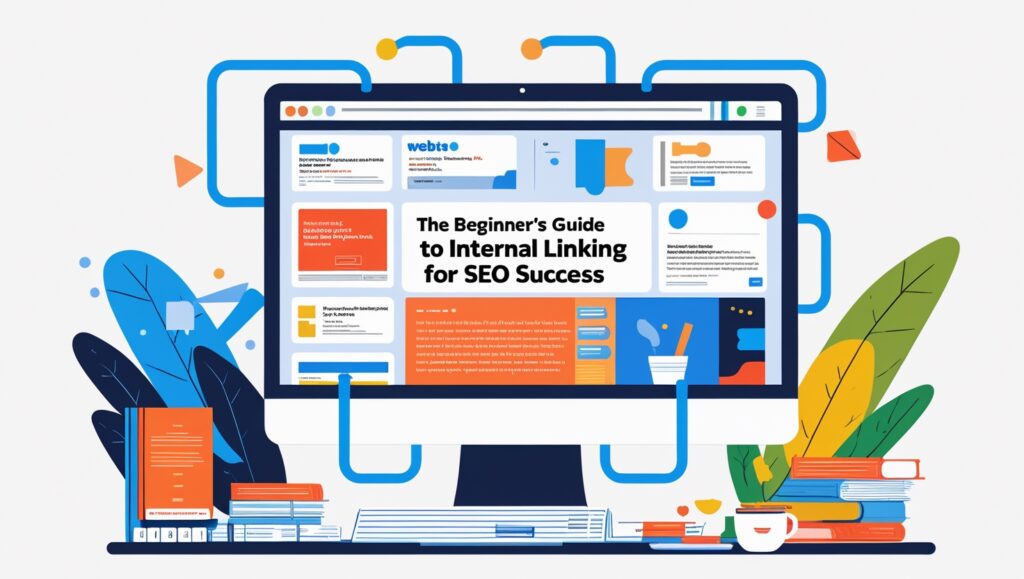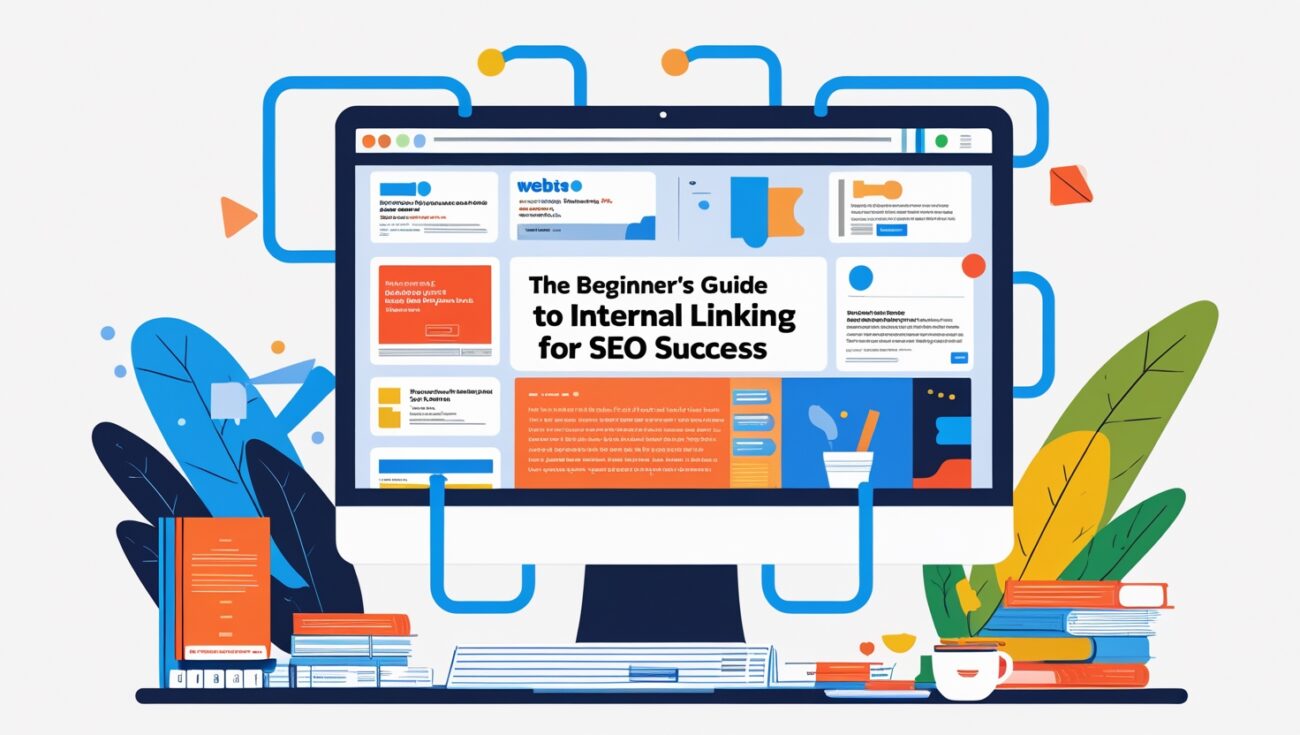The Beginner’s Guide to Internal Linking for SEO Success
When I first started my website, SEO felt like a huge, intimidating puzzle. I was so focused on writing great content and getting backlinks that I completely overlooked one of the most powerful and easy-to-implement strategies: internal linking. I thought it was just a way to let people click from one page to another, but I was wrong. I soon realized that a strong internal linking structure is the secret sauce that makes top websites rank so well.

Table of Contents
If you’re a beginner, this guide is for you. I’m going to break down internal linking in the simplest terms possible and give you a clear, actionable plan to get started. By the end, you’ll see that it’s not a complex, advanced strategy; it’s a foundational skill that anyone can master for huge results.
What Exactly is Internal Linking? (A Simple Explanation)
An internal link is a hyperlink on one page of your website that points to another page on the same website. That’s it. It’s a simple link, just like the ones you see every day. Think of your website as a city. Your pages are buildings, and your internal links are the roads that connect them.
Internal linking has two main purposes:
- For Search Engines: It acts as a roadmap for search engine bots (like Googlebot). When a bot lands on your homepage, it follows your links to discover all the other pages on your site. This helps Google crawl and index your content more efficiently.
- For Users: It helps your users navigate your website and find related, helpful content. A good internal link keeps a user on your site longer, reduces their bounce rate, and guides them to the information they need.
Why You Need to Start Internal Linking Today
- Pass Link Equity: In SEO, link equity is the authority or “vote of confidence” that a page receives from other pages. Internal links are one of the most effective ways to pass link equity from your high-authority pages to the pages you want to rank better.
- Improve Crawlability & Indexing: If a page on your site has no internal links pointing to it, it’s a dead end. Search engine bots will have a hard time finding and indexing it. This is why it’s crucial to link all of your content together.
- Boost User Experience: A website with a logical, easy-to-navigate internal linking structure provides a better experience for your visitors. They will find the information they are looking for and are more likely to stay on your site, which is a key signal that your website is a high-quality resource.
Your Beginner’s Action Plan
- Step 1: Link to Your Most Important Pages: Start by identifying your most important content. These are often your pillar pages or your most profitable articles. Now, go back to your other, relevant content and add a link to these important pages.
- Step 2: Use Descriptive Anchor Text: The words you use for your links (anchor text) are important. Instead of a generic phrase like “click here,” use a descriptive phrase like “the best internal linking strategies.” This helps both the user and Google understand what the destination page is about.
- Step 3: Find and Fix Your Orphaned Pages: An orphaned page is a page with no internal links pointing to it. It’s like a building with no road leading to it. Your first task as a beginner is to find these pages and link to them from other relevant content. A tool like Linkbot can easily find all of your orphaned pages so you can start fixing them today.
- Step 4: Make It an Ongoing Habit: Reassure them that it’s not a one-time thing. The best websites have a linking strategy built into their workflow. Whenever you publish a new post, go back to 2 or 3 relevant, old posts and add a link to the new one. A tool can help you find these new opportunities.
The Beginner’s Secret Weapon: Automation
I know this might sound like a lot of work, but that’s where automation comes in. I’ve found that using an automated tool takes all the guesswork out of the process. Instead of you spending hours trying to find opportunities, the tool does it for you. This allows you to focus on the content and let the tool handle the links. It’s the smart way to scale your website from the very beginning. Ready to simplify internal linking? Discover how Linkbot can help you build a strong link profile from day one.
Conclusion: Start Small, Win Big
Internal linking is one of the easiest and most powerful foundational SEO strategies you can learn. By following this simple beginner’s guide, you are not just adding links; you are building a stronger, more organized, and more authoritative website. Start small with these simple steps, and you will be amazed at the results you can achieve.
My journey taught me that a major mistake is seeing SEO as a mystery. By understanding the basics of internal linking, I made the mental shift from being a spectator to an active participant in my website’s success. This simple realization took the overwhelm out of SEO and turned it into a series of logical, manageable steps.
The long-term, compounding effect of this beginner’s strategy is what makes it so powerful. Each time you add a thoughtful, relevant link, you are not just performing a task; you are building your website’s authority, one link at a time. These small, consistent improvements add up to a significant competitive advantage over the long term, making your website an increasingly powerful asset.
I can say from personal experience that there is a special kind of satisfaction that comes from seeing a direct correlation between a new link and a ranking boost. It’s the feeling of taking a tangled mess and organizing it into a clean, logical network. The result is a website that just feels better to navigate, for both users and the people managing it.
A clean internal link profile also has a huge impact on your website’s overall trustworthiness and authority. When a user or a search engine bot lands on your page and sees a clear network of interconnected, relevant articles, it signals that you are a serious, comprehensive resource on the topic. This kind of professional organization is exactly what Google looks for.
The most important part of this foundational skill is building a consistent habit of linking. It’s not about a single audit and then forgetting about it. A good website is a living thing, and it needs regular maintenance to ensure your internal links stay clean, which is a key part of long-term SEO success.
I felt like I was finally in the driver’s seat of my SEO. For years, I had relied on external factors, which felt like I was giving up control of my SEO destiny. But by mastering a simple task like building my internal links, I was proactively building my site’s authority from the inside out, on my own terms, which was an empowering and exciting feeling.
By implementing a strategy that serves both SEO and conversions, you are also directly addressing Google’s E-E-A-T framework. You are demonstrating expertise by creating topical clusters, you are showing authority by linking from strong pages, and you are providing a better user experience, which is a key part of what Google looks for in a trustworthy website.
I’ll never forget the first time I applied my new internal link strategy to a page that was struggling to rank, and it shot up in the search results almost overnight. This was my “aha” moment. I realized that a strategic, well-placed link from a high-authority page was far more powerful than I ever thought possible.
One of the greatest benefits I got from using an automated tool to manage my link profile was the “to-do” list it provided. Instead of being overwhelmed by the sheer size of my website, the tool gave me a prioritized, actionable list of fixes to make. It transformed a monumental, frustrating task into a series of manageable steps that I could tackle in just minutes.
It’s crucial to understand the difference between a simple, generic link and a link that’s part of a strategic, mapped plan. A simple link is a one-off connection. A link that’s part of a plan is a purposeful part of a larger network, designed to pass authority and guide a user. The latter is far more powerful.
Ultimately, mastering internal linking is a simple but powerful strategy that transforms a website’s foundation. It’s a low-cost, high-impact fix that can instantly improve your site’s health and SEO performance. It’s the kind of foundational SEO work that every website owner should prioritize.
My final piece of advice is to not be intimidated. Don’t worry about the high cost of manual labor; just focus on making your website a better place for your readers. You will be amazed at the progress you make and the results you can achieve.

